 A condensed history of the Chinese fleet
A condensed history of the Chinese fleet
Although at the end of the Middle Ages China was an indisputable great maritime power – at the time of Zheng He‘s expeditions – in the nineteenth century, Westerners had no trouble imposing their trading posts and exploiting vast coastal territories. Chinese only naval forces consisited of junks armed with medieval-style muzzle-loading cannons more noisy than effective, light years from the steel rifled guns of the Westerners. Several naval skirmishes saw the Europeans victorious with a wide margin. From 1865, however, and with the help of the Americans and the French, the Foochow and Kiangnan shipyards were able to deliver the first Chinese armed steamers. From 1875, the Empress authorized the establishment of a naval budget for the maritime provinces, and minister Li Hung Chang was the first to set up a modern navy in 1880.
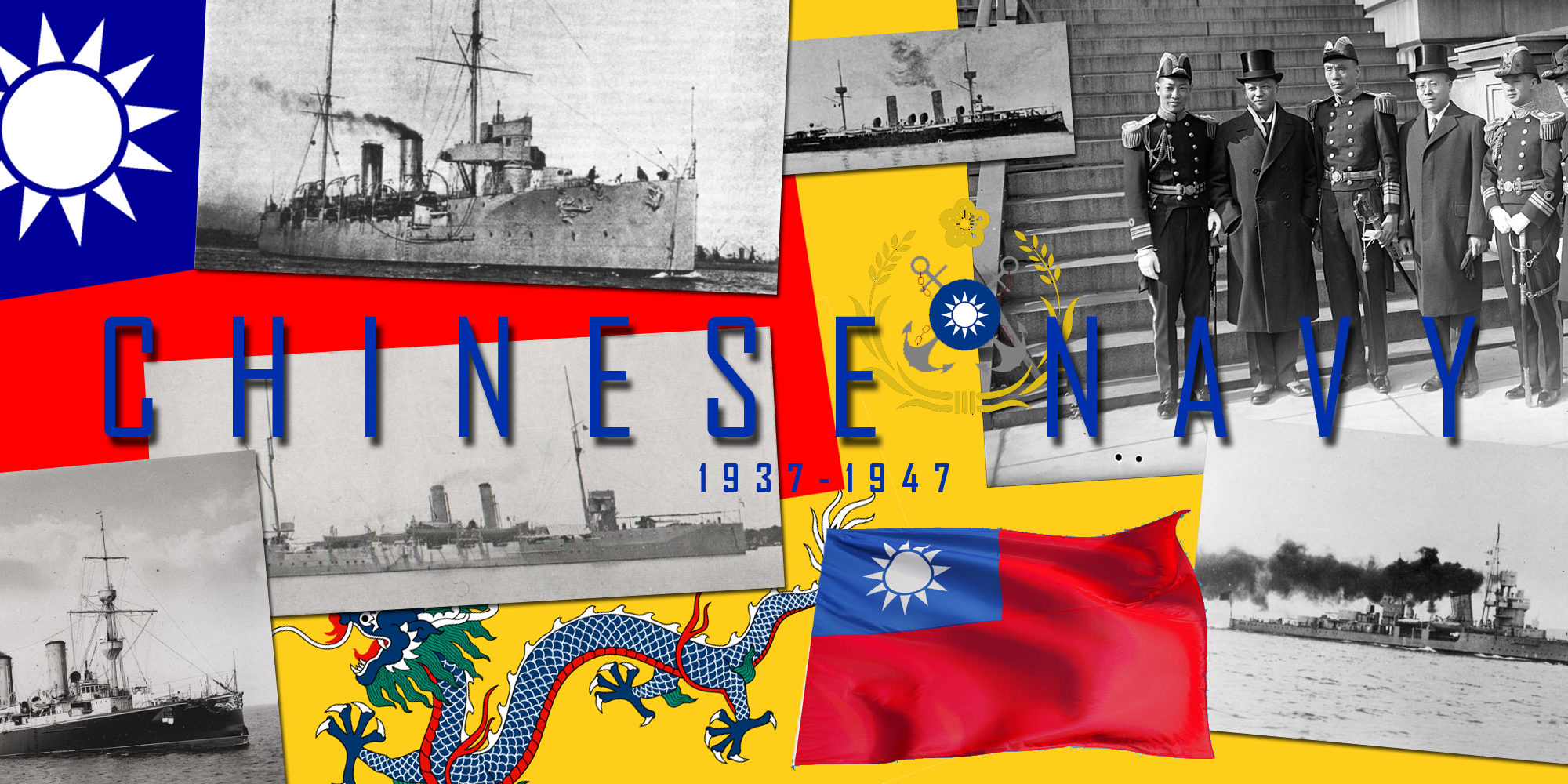
List (done and ucoming)
- Chao Ho class cruisers
- Chao Yung (Chaoyong) class protected cruisers (1880)
- Dingyuan class ironclads (1881)
- Fu Po class transport sloops (1870)
- Hai Tien class protected cruisers (1898)
- Hai Yung class protected cruisers (1897)
- Ning hai class cruisers (1931)
- Pao Min (1885)
Fu Po class Cruisers (1870)
Hai Ching class (1874)
Wei Yuan class (1878)
Nan T’an class (1883)
King Ching class (1885)
Tung Chi class (1895)
Chao Ho class (1911)
Gunboats (1867-1918)
Torpedo gunboats (1891-1900)
Destroyers (1906-1912)
Torpedo boats (1883-1902)
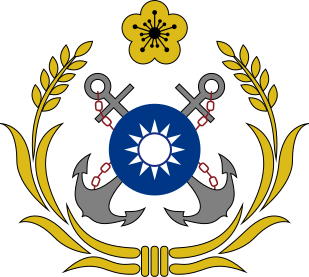
In 1894 took place his first major confrontation, against the Japanese fleet at Yalu. Although defeated, the behavior of the Chinese crews was exemplary and encouraging for the future. In 1898, an important naval plan was put in place including 5 cruisers and many light units. However, the general condition of the ships after 1895 had deteriorated: Unrevised machines, lack of maintenance of the hulls and structures, were the direct result of the corruption and disinterest of provincial governors. As such, the Chinese fleet was at the beginning of the century organized into four fleets: the North Fleet, based in Chihli, the southern fleet, based in Shanghai and Nanyang, that of Foochow (Fukien, Chekiang), and that of Canton (Kwantung, Kwangsi).
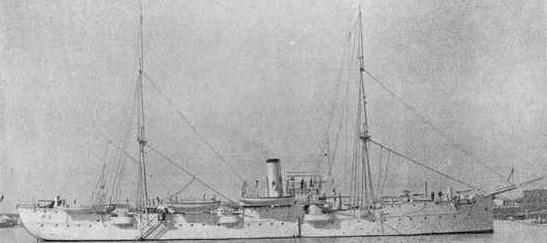
Chinese cruiser Tung Chi (1895)
From 1908, after the Boxer War and the chaos that ensued, a vast rearmament and reorganization plan was orchestrated, with the creation of three fleets (North, South and Central), each organized as a squadron comprising a projected 14,000 tons battleship, and 12 to 20 cruisers of different tonnages in four classes. Nevertheless, the command of these three fleets remained local, and the commanders of the latter, who could possibly “cooperate” together, had to answer only in front of the imperial court, not very aware of maritime things.
In 1909, a naval headquarters office was created. Naval advisers went abroad to study the needs of the fleet. they came back with a first plan “reduced” over three years, including three modern training cruisers, 8 gunboats, a destroyer and a transport. A second 7-year plan included 8 battleships, 20 cruisers, 30 destroyers and torpedo boats, plus dozens of river gunboats.
In 1911, it was the beginning of the Chinese revolution. The starting point was the mutiny of the troops at Wushang on October 10, followed by an uprising that ended the multi-secular reign of the Manchu dynasty. The young emperor Pu-Yi was forced to abdicate in 1912 and was kept in his palace until his majority. The first president of the new regime was Marshal Yuan Shih-Kai.
The commander of the revolutionary naval forces, Huang Chung Ying, became the minister of the navy. But the Chinese Republic had empty pockets after two years of chaos and struggle, and the ambitious naval plan of 1909 was canceled. The government choose instead to stick with the first 3-year program. Ships under construction abroad were even offered for sale, but only Greece was interested in the future Hellé. But while the president was multiplying unrealistic programs, the various fleets were falling into the hands of local warlords. Th Chinese fleet existed only on paper in 1914. In August 1917, China declared war on the central empires. She took this opportunity to capture German and Austrian commercial ships and modernize the aging trade fleet.
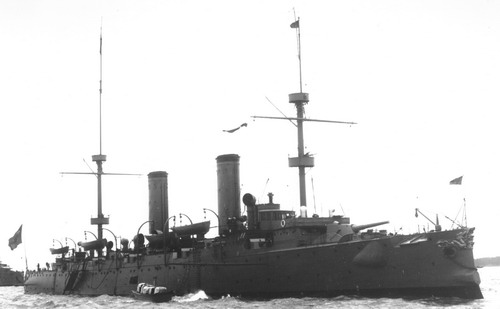
Chinese cruiser Hai Chi (1898)
It had, however, taken no part in the attack on Tsing Tao, the only German Pacific port, leaving the naval forces of Japan and the Commonwealth to hunt Von Spee’s squadron. Subsequently, the escape of the new president, Sun Yat Sen, caused the return of Canton to the European forces to protect it from nationalization. European warships thus were anchored there from 1924, and until the Japanese invasion in 1937.
Order of battle in 1914
No Battleship: The two 1885 Ting Yuen class barbette ironclads has been captured or destroyed during the Battle of Yalu in 1895. All 16,000-ton pre-dreadnought project were never completed.
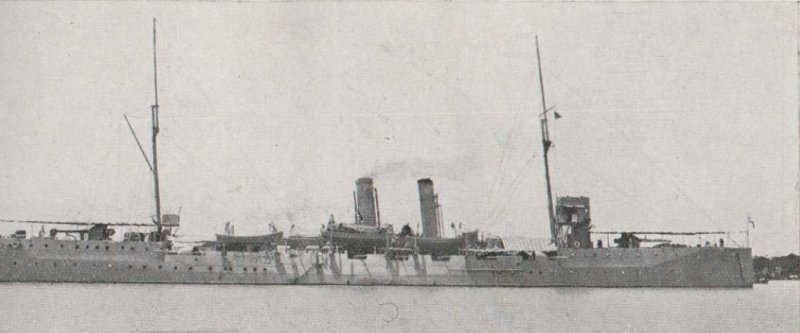
Chinese Cruiser Chao Ho (1911)
3 Destroyers:
Class Chang Feng (1911), built in Germany at Schichau.
41 Gunboats:
Armoured gunboats: Chin Ou (1875) about to be reformed in 1914.
High seas gunboats: 2 Class Chiang Yuan gunboats (1904), 6 Class Chu gunboats (1906), but also the Kuan Chuan, An feng and Lien Ching.
Riverine gunboats: 2 class chiang Hsi (1911), 4 class Chiang Kung, 2 class Yung Hsian, Wu Feng. Older (1867-94): Sui ching, 2 An Lan class, Tse Hai, 2 Ching Yuan class, Tse Tien, Si Chew, Hai Ching Chang, Hai Tung Hung, 4 class Kuang Yuan, 2 class Kuang Wu, 2 class Kuang Chin, and 2 Kuang Ching class.
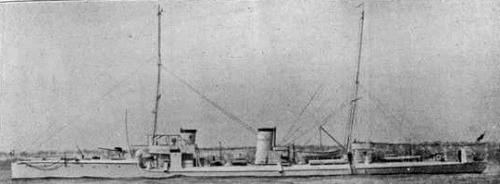
Destroyer Yu Chang, classe Fu Po (navypedia.org)
23 Miscellaneous:
-Torpedo gunboats Fei Ying (1895), Kuang Ting (1891), 2 class Dog Wai (1899).
-Torpedo boats: 4 class Hu Peng (1906), 2 class Lei Lung (1883), 9 class Lei Chien (1885), 2 class Chang (1895), 2 class Su (1895).
Tonnage 1914:
Cruisers; 18 -Destroyers: 3 -Miscellaneous; 64
The Republic of China Navy:
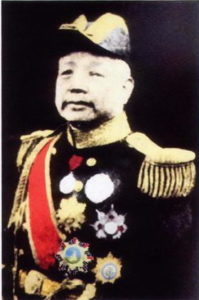 Even before the great war, the fate of the Chinese Navy was radically changed by the Revolution: The Xinhai Revolution of 1911 which saw the establishment of the Republic of China in 1912. The Imperial Chinese Navy became the Republic of China Navy. The Ministry of the Navy was established in the Provisional Government of the Republic of China already in 1911 and Liu Guanxiong, a former Qing dynasty admiral, became the first Minister of new Navy.
Even before the great war, the fate of the Chinese Navy was radically changed by the Revolution: The Xinhai Revolution of 1911 which saw the establishment of the Republic of China in 1912. The Imperial Chinese Navy became the Republic of China Navy. The Ministry of the Navy was established in the Provisional Government of the Republic of China already in 1911 and Liu Guanxiong, a former Qing dynasty admiral, became the first Minister of new Navy.
Liu Guanxiong (1861, Fuzhou, + 1927, Tianjin), a Chinese Admiral from the late Qing dynasty became the Navy Minister of China from 1912. He held this post until 1916 and again in 1917-1919. A graduate of the Navy College of Fuzhou, he learned his trade in the Royal Navy. He doubled as Commander-in-Chief of as the Republic of China was founded. He cumulated this with the Minister of Education and Transportation in 1912-13. Yuan Shikai‘s became Emperor in 1915 and named him a Duke, but after his death, Liu Guanxiong allied with Duan Qirui. The latter refused to validate the abolished constitution and the Chinese fleet soon became fractured, with splitted loyalties.
The Chinese Navy most troubled years:
In 1915, as the fleet was slowly reorganized, there was a short-lived attempt by statesman and general Yuan Shikai in late 1915 to revived the Empire, under modernized basis. Early in 1916, this dream collapsed. Yuan became the Hongxian Emperor but amounting opposition from the Chinese republican cause. Despite the ousting of Yuan, that was the source of many years of turmoil. This opened the pandora box of a period of conflict between various local warlords, generally known as the “warlord era”. This prevented any chance for the Navy to be unified, organized, but the fleet was nevertheless reinforced with some gunboats: 2 class Chiang Hsi (high seas), 3 class Chung Chung, Hai Yen, 2 class Hai Fu, 2 class Hai Hung, and 2 Hai Ho class.
One of the worst tragedies of the time was the sinking of SS Hsin Yu in 22 April 1916. This Chinese Army transport ship, displacing 1,629 ton and dating back from 1889 carried over a thousand enlisted men and officers when caught in a thick fog on her way to Foo Chow, south of the Chusan Islands, she was accidentally rammed by the cruiser Hai Yung . She sank rapidly and carried with her nearly all the crew, the survivors being rescued way too late; In total nine sailors and 20 soldiers survived.
The Navy fell into a state of collapse, with no maintenance, but for the ships held by various warlords. Sa Zhenbing in 1920 became Premier of the Republic of China, and as a graduate of the Fuzhou Naval Academy, and student of the Royal Naval College, Greenwich, he was a veteran of the Battle of Weihaiwei in 1895. He became Admiral-in-Chief of the Beiyang, Nanyang and Guangdong Fleets. During the Wuchang Uprising of 1911 he was tasked to sail to Wuhan to suppress the revolutionaries, but after arrival, swapped sides. He became nonetheless Minister of the Navy under Yuan Shikai. He became Governor of Fujian Province from 1922 to 1926 and in 1949, instead of joining the ROC, became a communist. For the interwar, see the Chinese Navy in WW2 post.

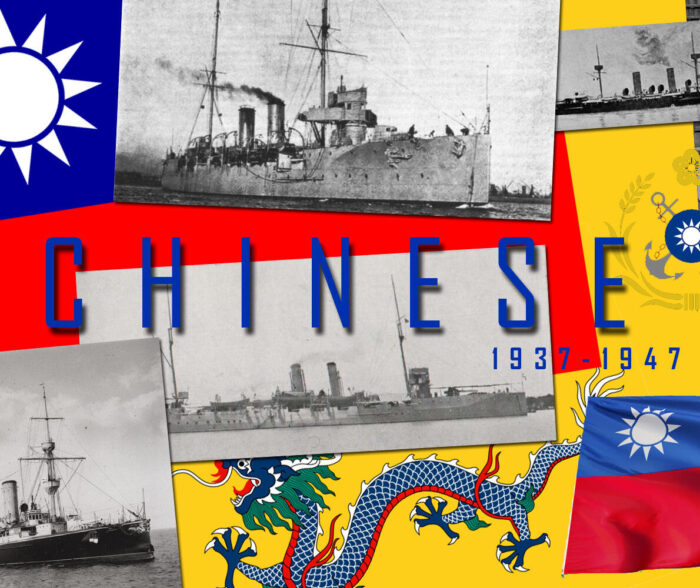
 Latest Facebook Entry -
Latest Facebook Entry -  X(Tweeter) Naval Encyclopedia's deck archive
X(Tweeter) Naval Encyclopedia's deck archive Instagram (@navalencyc)
Instagram (@navalencyc)





 French Navy
French Navy Royal Navy
Royal Navy Russian Navy
Russian Navy Armada Espanola
Armada Espanola Austrian Navy
Austrian Navy K.u.K. Kriegsmarine
K.u.K. Kriegsmarine Dansk Marine
Dansk Marine Nautiko Hellenon
Nautiko Hellenon Koninklije Marine 1870
Koninklije Marine 1870 Marinha do Brasil
Marinha do Brasil Osmanlı Donanması
Osmanlı Donanması Marina Do Peru
Marina Do Peru Marinha do Portugal
Marinha do Portugal Regia Marina 1870
Regia Marina 1870 Nihhon Kaigun 1870
Nihhon Kaigun 1870 Preußische Marine 1870
Preußische Marine 1870 Russkiy Flot 1870
Russkiy Flot 1870 Svenska marinen
Svenska marinen Søværnet
Søværnet Union Navy
Union Navy Confederate Navy
Confederate Navy Armada de Argentina
Armada de Argentina Imperial Chinese Navy
Imperial Chinese Navy Marinha do Portugal
Marinha do Portugal Mexico
Mexico Kaiserliche Marine
Kaiserliche Marine 1898 US Navy
1898 US Navy Sovietskiy Flot
Sovietskiy Flot Royal Canadian Navy
Royal Canadian Navy Royal Australian Navy
Royal Australian Navy RNZN Fleet
RNZN Fleet Chinese Navy 1937
Chinese Navy 1937 Kriegsmarine
Kriegsmarine Chilean Navy
Chilean Navy Danish Navy
Danish Navy Finnish Navy
Finnish Navy Hellenic Navy
Hellenic Navy Polish Navy
Polish Navy Romanian Navy
Romanian Navy Turkish Navy
Turkish Navy Royal Yugoslav Navy
Royal Yugoslav Navy Royal Thai Navy
Royal Thai Navy Minor Navies
Minor Navies Albania
Albania Austria
Austria Belgium
Belgium Columbia
Columbia Costa Rica
Costa Rica Cuba
Cuba Czechoslovakia
Czechoslovakia Dominican Republic
Dominican Republic Haiti
Haiti Hungary
Hungary Honduras
Honduras Estonia
Estonia Iceland
Iceland Eire
Eire Equador
Equador Iran
Iran Iraq
Iraq Latvia
Latvia Liberia
Liberia Lithuania
Lithuania Mandchukuo
Mandchukuo Morocco
Morocco Nicaragua
Nicaragua Persia
Persia San Salvador
San Salvador Sarawak
Sarawak Uruguay
Uruguay Venezuela
Venezuela Zanzibar
Zanzibar Warsaw Pact Navies
Warsaw Pact Navies Bulgaria
Bulgaria Hungary
Hungary

 Bundesmarine
Bundesmarine Dutch Navy
Dutch Navy Hellenic Navy
Hellenic Navy Marina Militare
Marina Militare Yugoslav Navy
Yugoslav Navy Chinese Navy
Chinese Navy Indian Navy
Indian Navy Indonesian Navy
Indonesian Navy JMSDF
JMSDF North Korean Navy
North Korean Navy Pakistani Navy
Pakistani Navy Philippines Navy
Philippines Navy ROKN
ROKN Rep. of Singapore Navy
Rep. of Singapore Navy Taiwanese Navy
Taiwanese Navy IDF Navy
IDF Navy Saudi Navy
Saudi Navy Royal New Zealand Navy
Royal New Zealand Navy Egyptian Navy
Egyptian Navy South African Navy
South African Navy






























 Ukrainian Navy
Ukrainian Navy dbodesign
dbodesign